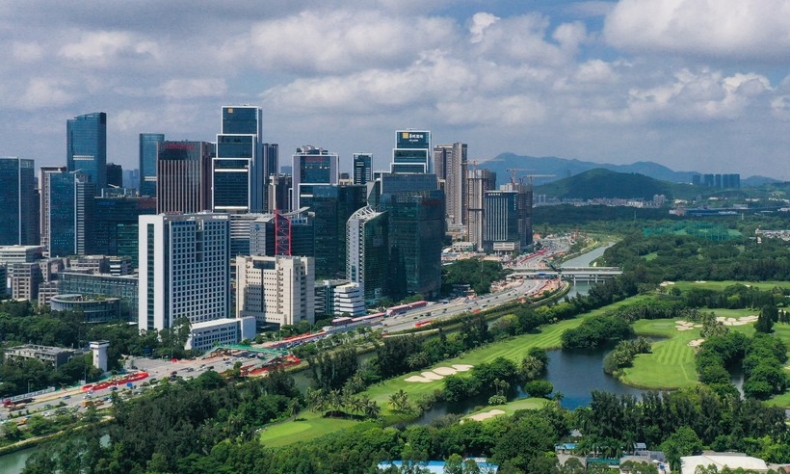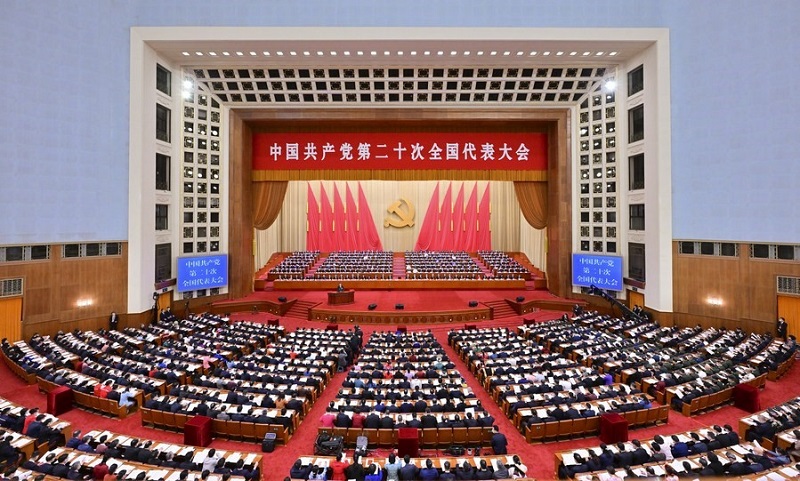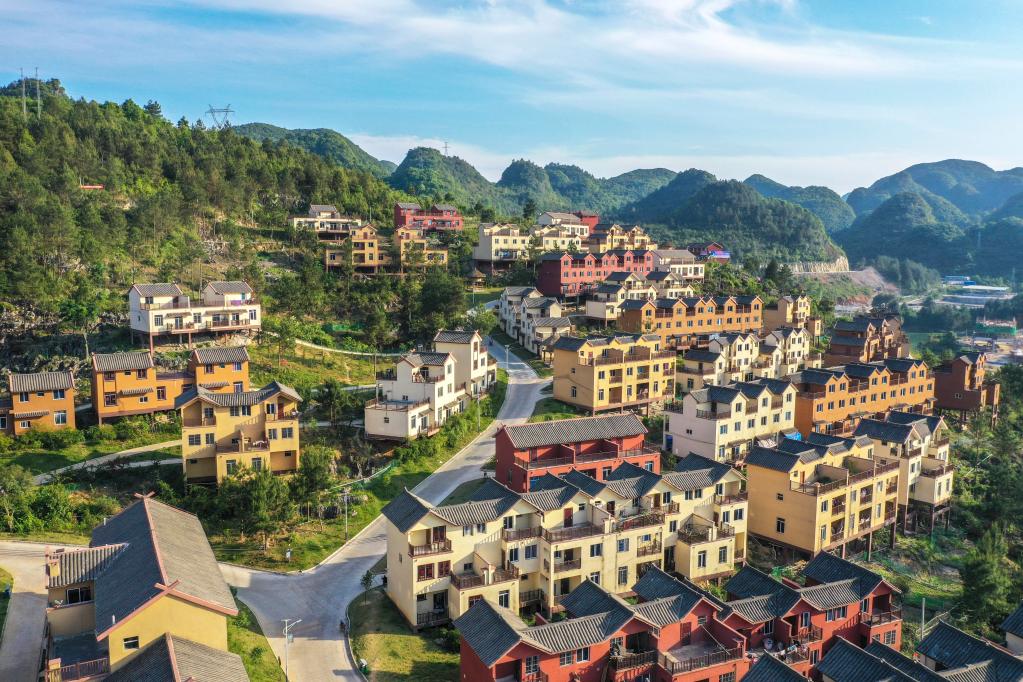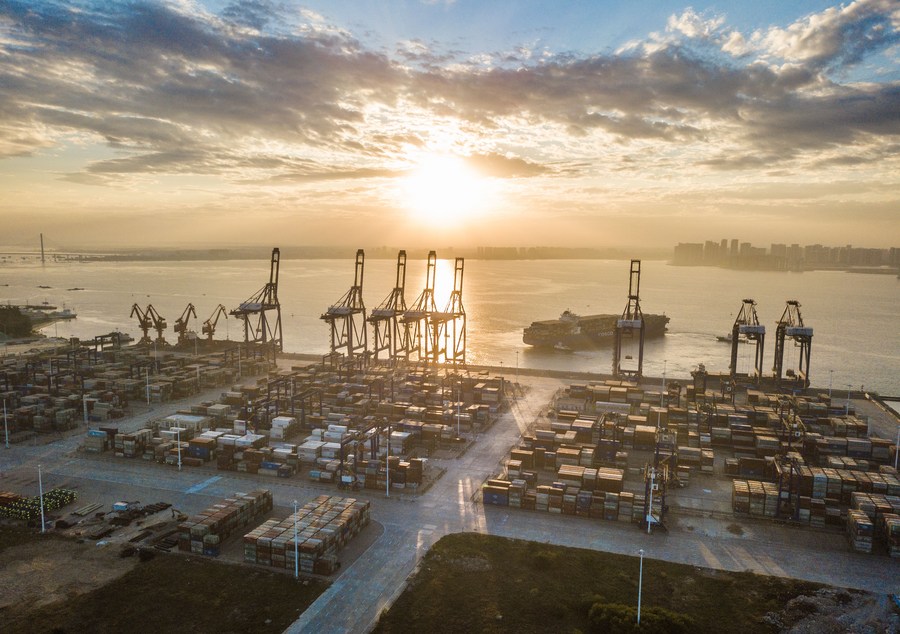A New Paradigm of Building Modern Society

The CPC’s policies are deeply rooted in Chinese society and are aimed at benefiting all people.
Modernization is the broad concept that refers to a progressive transition away from a “pre-modern” or “traditional” society to a “modern” society. In today’s world, modernization comprises industrialization, urbanization and globalization. For China, a country with a population of over 1.4 billion, more than the population of all developed countries combined, modernization is an especially difficult task.
Indeed, when Deng Xiaoping proposed the goal to realize China’s modernization in the late 1970s, very few could imagine how China would achieve this goal, and even less what it would look like after 40 years.
Nobel-award winning economist Joseph Stiglitz, was one of the few in the West that realized China’s potential. Specifically, he predicted that urbanization in China would be one of the most influential global events shaping the 21st century.
Today, China is the second largest economy with a GDP close to $18 trillion. It has successfully eradicated absolute poverty and built a moderately prosperous society in all respects, and is now striving to realize the second centenary goal of building a modern socialist country.
Modern society is the basis of a modern country
At the opening session of the 20th National Congress of the Communist Party of China (CPC), Xi Jinping, general secretary of the CPC Central Committee, laid out the road map for building up a modern socialist country by the middle of this century. He emphasized that a modern socialist country ultimately centers around achieving high-quality development and improving people’s lives and livelihoods.

A modern society is achieved mainly through advanced industry, innovative technology and a high degree of urbanization. For China, society-building, which includes improving people’s livelihoods and maintaining social stability, is also central to modernization.
The last decade has seen China makes remarkable achievements in society-building. Indeed, China has successfully eradicated absolute poverty, developed a moderately prosperous society in all respects, and has largely contained the COVID-19 pandemic. China has also realized sustainable economic growth and created a stable society.
Such ‘miracles’ are a strong rebuttal to some Western political scholars such as Samuel Huntington who argued that the modernization process creates turmoil. Now, many ask how the miracles came about and why China’s modernization process went so smoothly?
CPC plays a leading role in modern society building
In Western democracies, political parties act as a link between civil society and the state; specifically, they stand for and protect certain vested interests and groups. Scholars often refer to this phenomenon as a “party as a part”. In China, the situation is quite different. The CPC’s policies are deeply rooted in Chinese society and are aimed at benefiting all people. In China, the Party plays a leading role in governance and, by avoiding partisan strife or factional interests, is able to implement long-term policies and strategies.
Despite rapid urbanization in recent years, social policies have helped create more jobs and improved healthcare and housing conditions. During the early 1990s, for example, China’s social security system was established for laid-off workers as reforms targeted SOEs. After the millennium, social security programs were gradually expanded to include the whole population. Significantly, such policy innovations were not dominated by any interest group nor were they the result of populism. That is to say, the Party has the autonomy necessary to carry out impartial and scientific decisions.

Balance economy and society to improve people’s well-being
The question of how to balance the economy and society has been a major concern for most governments since the Industrial Revolution. Notably, Karl Marx said that capitalism creates inequality which eventually engulfs the entire society. Karl Polanyi held a similar view, noting that the so-called “double movement” was the cause of the Wall Street Crash of 1929 and the subsequent Great Depression.
On the other hand, welfare states, which believe that organized labor serves to ease tensions between capital and the working class, have their own set of challenges. Notably, they require huge levels of spending to ensure the people’s well-being and faced with rapidly aging societies, require greater levels of state support.
“Developmental States” such as Japan and the Republic of Korea took another path to development. Such countries, with strong state traditions, tried to balance growth and stability at the very beginning when their economies took off. However, the Asian financial crisis in the late 1990s saw the malfunctioning of the social welfare systems in these countries. As a result, many adopted an inclusive welfare system as a remedy after the crisis.
The Chinese-style modernization, which developed a unique combination of market facilitation and society building, is centered around people’s well-being rather than capital. Indeed, social welfare and related policies have always been highlighted along with economic development. Notably, ever since the sixth Five Years Plan in the early 1980s, the domestic economy and social development are projected simultaneously. In contrast to Western models, China’s economy-society relationship delivers a new way for developing countries to build a modern society.

(Photo/Xinhua)
Modern society building calls for collaborative efforts
Modern society faces many risks and uncertainties, which can only be overcome through joint efforts. And given the different perceptions of equity, justice and order, society-building cannot be measured using standard economic indexes.
China’s rapid development also faces kinds of risks and challenges. That’s why the Party encourages all stakeholders to work together to address challenges and form solutions for healthcare, public safety and community development. Today, as socialism with Chinese characteristics enters a new stage of development, common prosperity is encouraged to activate more engagement in society building.
A more harmonious society will certainly help develop China into a modern socialist country by 2050 (the second centenary goal). In his plenary speech, Xi urged everyone to work together to accelerate the society-building process, so the second centenary goal may be realized.
In order to build a harmonious society, society as a whole should follow the Party’s leadership and advance socialism with Chinese characteristics. We should also realize that high-quality development and whole-process people’s democracy will not only help China realize the second centenary goal, but also provide economic and political support to fulfill the task. Finally, we must always keep in mind that common prosperity is China’s ultimate policy goal.
The author is a professor conducting social governance research at the Department of Social & Ecological Studies, China National Academy of Governance.
The article reflects the author’s opinions, and not necessarily the views of China Focus.
 Facebook
Facebook
 Twitter
Twitter
 Linkedin
Linkedin
 Google +
Google +










